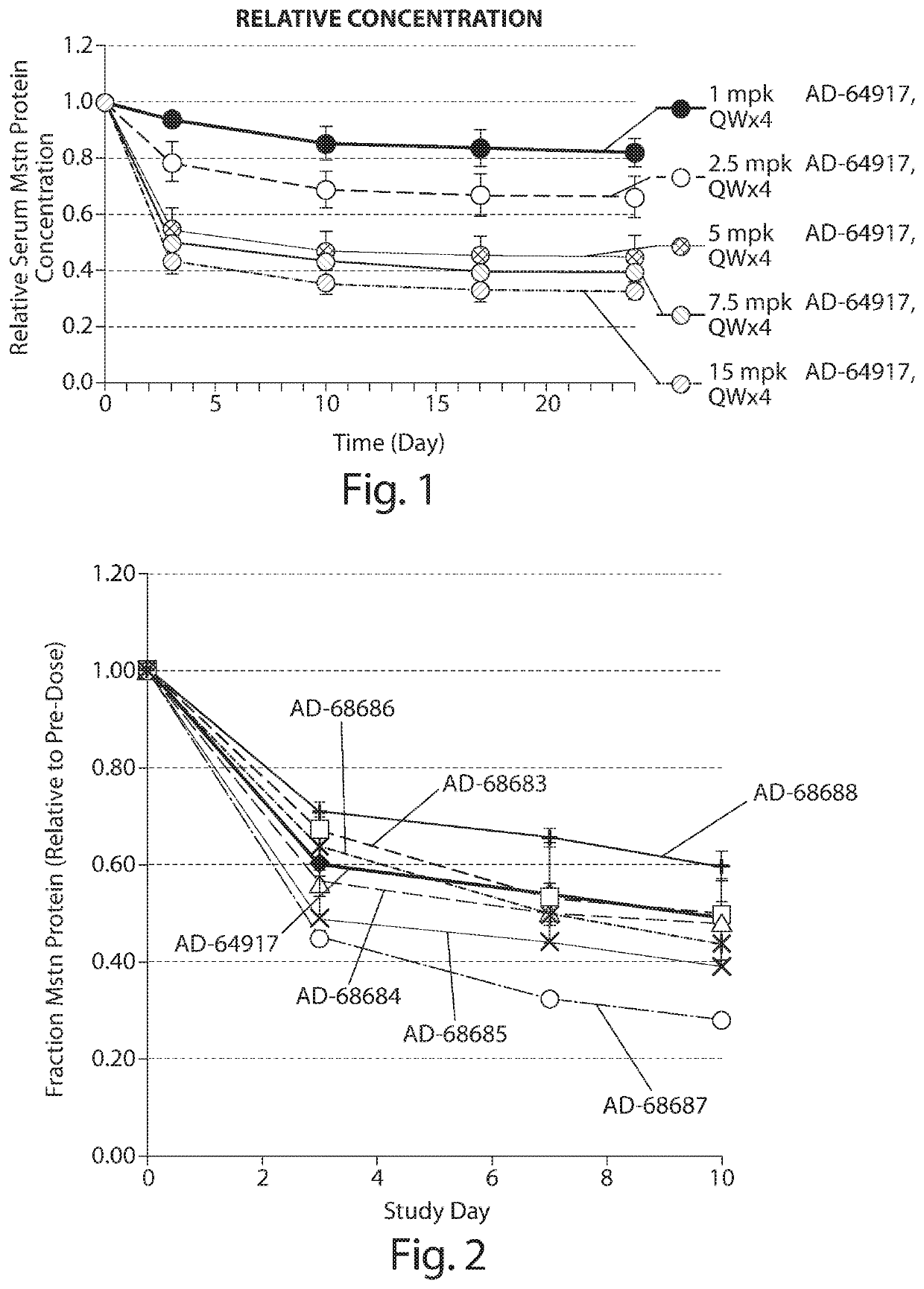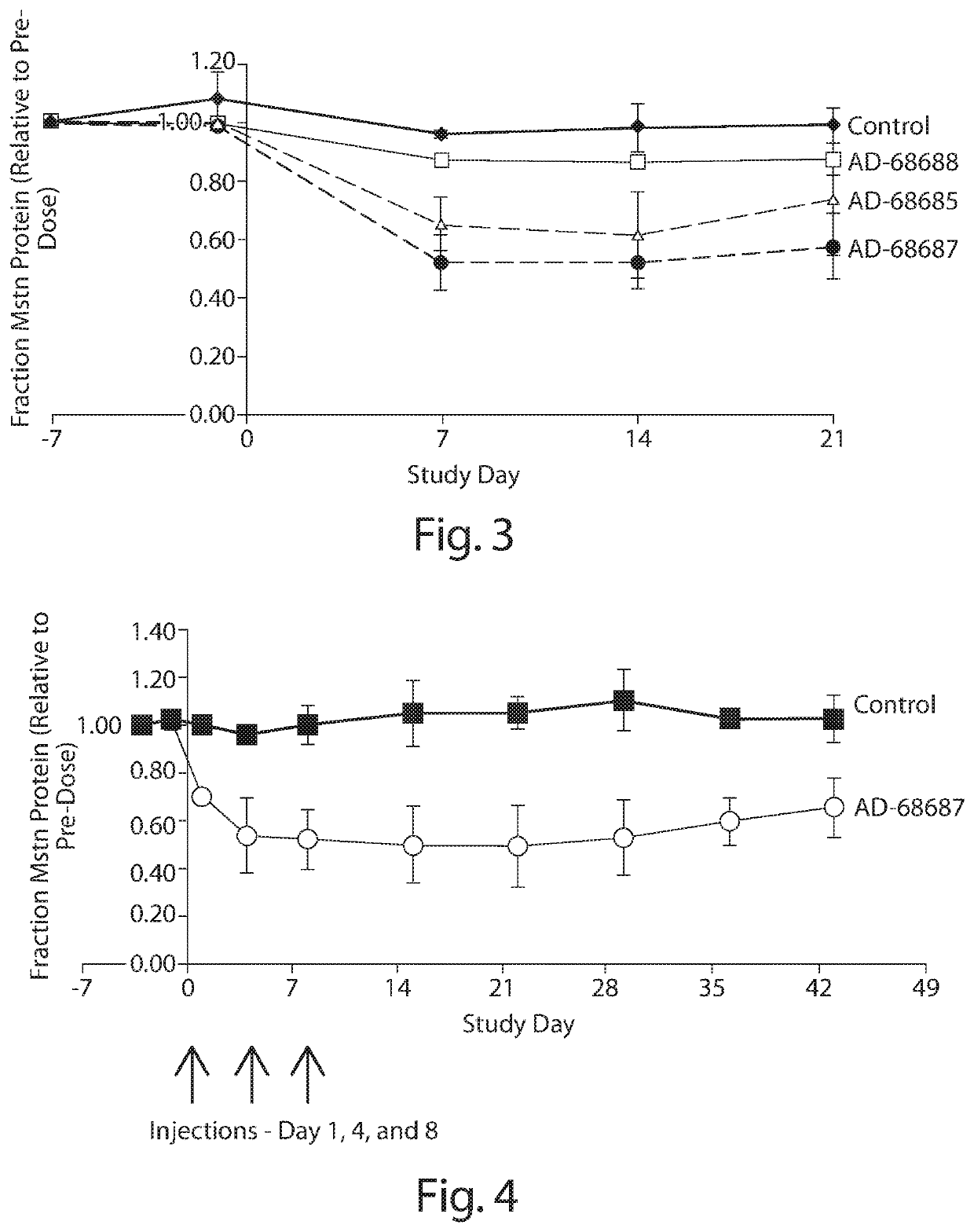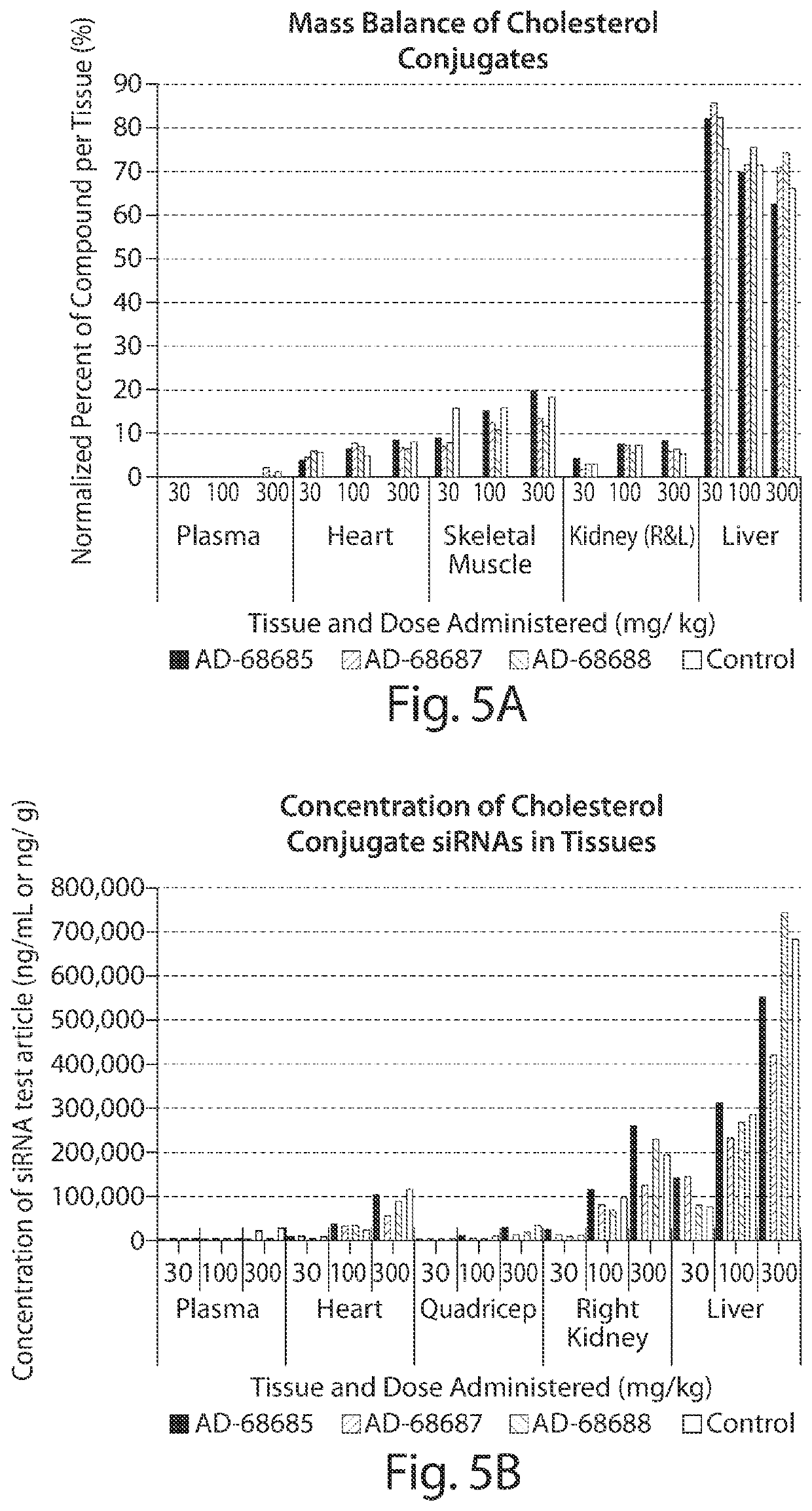Myostatin irna compositions and methods of use thereof
a technology of compositions and myostatin, which is applied in the direction of pharmaceutical delivery mechanisms, biochemistry apparatus and processes, organic active ingredients, etc., can solve the problems of limiting systemic sirna delivery to particulars, reducing the usefulness of therapeutic applications, and limiting the range of tissues in which sirna is delivered, so as to promote muscle growth and prevent muscle atrophy or muscle loss
- Summary
- Abstract
- Description
- Claims
- Application Information
AI Technical Summary
Benefits of technology
Problems solved by technology
Method used
Image
Examples
example 1
uences and Methods
[0131]Sirna sense and antisense strands were synthesized using routine methods known in the art. Cholesterol conjugated RNAs, were synthesized using controlled-pore glass solid support carrying a cholesterol-hydroxyprolinol linker as described previously, for example, in US20050107325.
[0132]Sense strands of duplexes AD-64917, AD-68683, AD-68684, AD-68685, AD-68687, and AD-68688 have the sequence of AUGGCAAAGAACAAAUAAUAA-3′ (SEQ ID NO: 9) and all antisense oligonucleotides have the sequence 5′-(T / U)UAUUAUUUGUUCUUUGCCAUUA-3′ (SEQ ID NO: 10) wherein the (T / U) may be either a T or a U, and the antisense strand of the siRNA molecule is complementary to nucleotides 1192-1211 of GenBank Accession No. AF104922.1 (GI:4028595). The antisense strand of the AD-64916 duplex is targeted to nucleotides 1194-1211 of GenBank Accession No. AF104922.1. Modified sense and antisense sequences are provided in Table 1 below and a key to the modified nucleotide and chemical subunit abbrev...
example 2
AR Analysis of Myostatin mRNA and Protein Level Knockdown by Cholesterol Conjugated siRNA in Mice
[0137]Cholesterol conjugated siRNA AD-64916 (disclosed in WO2015070158 as MSTN 1167) and AD-64917 targeted to myostatin, or PBS control, were administered by IV bolus tail vein injection at a dose of 5 or 15 mg / kg, at day zero to CD1 mice (n=5). At day 7, gastrocnemius muscle and blood were collected and assayed for siRNA and myostatin mRNA levels, and myostatin serum protein levels, respectively. Results are shown in Tables 3-6 below.
TABLE 3Myostatin siRNA in gastrocnemius muscle in ng / mgDuplex5 mg / kg15 mg / kgAD-649160.020.98AD-649170.291.84
TABLE 4Percent myostatin mRNA in gastrocnemius muscle vs. PBS treated mouse defined as 100% expression.Duplex5 mg / kg15 mg / kgAD-6491657%29%AD-6491741%23%
TABLE 5Myostatin protein levels in serum as compared to PBS treated mouse.Duplex5 mg / kg15 mg / kgAD-6491646.4429.96AD-6491734.6725.01PBS control66.44
TABLE 6Relative myostatin protein levels in serum vs P...
example 3
ose Titration of Level and Duration of Myostatin Serum Protein Level Knockdown by Cholesterol Conjugated siRNA in Mice
[0139]Cholesterol conjugated siRNA AD-64917 targeted to myostatin was administered by IV bolus tail vein injection at a dose of 1, 2.5, 5, 7.5, or 15 mg / kg, once per week for four weeks (days 0, 7, 14, and 21) to CD1 mice (n=4 per group). Blood samples were collected prior to administration of the siRNA (day 0), and throughout the experiment (days 3, 10, 17, and 24). Serum was prepared and the relative serum myostatin protein concentrations were determined using the commercially available kit provided above. The results are shown in FIG. 1. Increasing knockdown of myostatin levels as a percent of total serum protein levels was observed with increasing doses of siRNA cholesterol conjugates.
PUM
| Property | Measurement | Unit |
|---|---|---|
| weight | aaaaa | aaaaa |
| weight | aaaaa | aaaaa |
| weight | aaaaa | aaaaa |
Abstract
Description
Claims
Application Information
 Login to View More
Login to View More - R&D
- Intellectual Property
- Life Sciences
- Materials
- Tech Scout
- Unparalleled Data Quality
- Higher Quality Content
- 60% Fewer Hallucinations
Browse by: Latest US Patents, China's latest patents, Technical Efficacy Thesaurus, Application Domain, Technology Topic, Popular Technical Reports.
© 2025 PatSnap. All rights reserved.Legal|Privacy policy|Modern Slavery Act Transparency Statement|Sitemap|About US| Contact US: help@patsnap.com



